EDUCATION
Educated Guess: A Key to Smarter Decision-Making
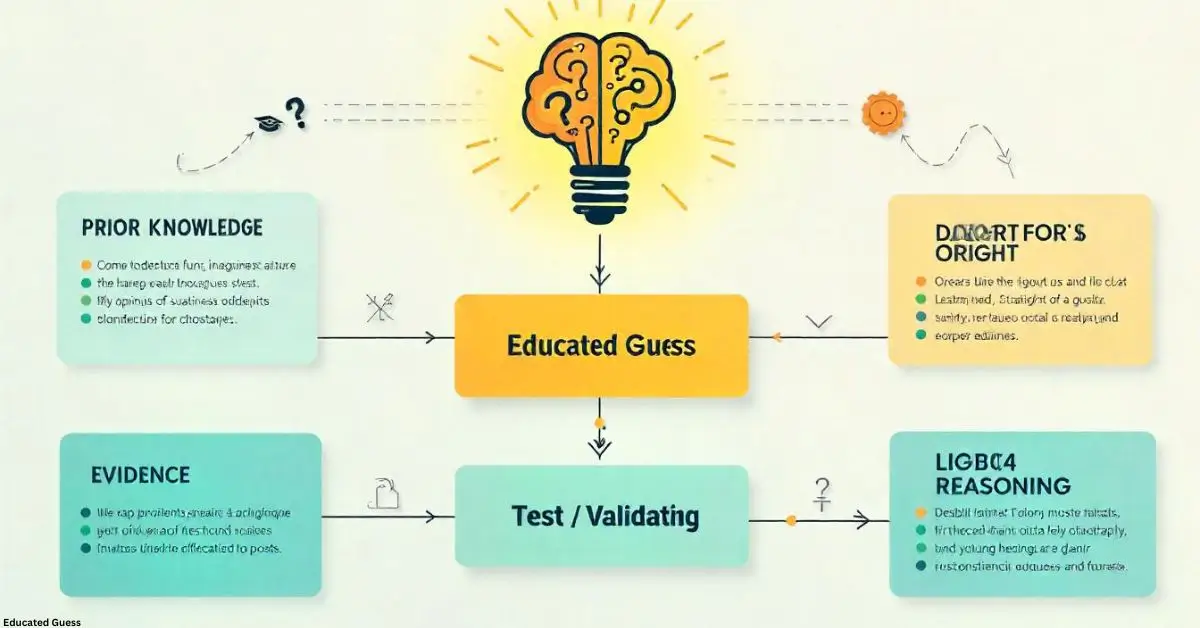
An educated guess is not just a stab in the dark—it’s a thoughtful conclusion drawn from logic, past experience, and contextual understanding. Whether you’re solving problems in the workplace or making day-to-day choices, this technique helps bridge the gap between uncertainty and action.
What Is an Educated Guess?
At its core, an educated guess is a conclusion made using available information, relevant knowledge, and reasonable deduction. It’s more informed than speculation but doesn’t require complete certainty. You’re relying on your understanding, memory, and mental models to draw likely conclusions.
In many situations, total certainty is unrealistic. That’s when logical approximations step in. For example, a teacher might predict a student’s exam score based on prior performance without seeing the test. That’s not random—it’s a reasoned assumption.
Comparison Table: Educated Guess vs Similar Concepts
| Feature | Educated Guess | Estimation | Hypothesis |
| Cost | Minimal | Low to moderate | Moderate to high |
| Efficiency | High | Average | High (but slower to validate) |
| Ease of Use | Easy with experience | Accessible | Requires structured methodology |
| Scalability | Highly adaptable | Variable | Consistent across scientific disciplines |
| Benefits | Accelerates informed decisions | Offers ballpark insights | Drives testing and discovery |
Why the Human Brain Is Wired for Inference
Human beings are wired for pattern recognition and fast conclusions. When presented with incomplete data, our brains activate associative memory to identify what’s most likely based on context. This allows professionals across industries to make insightful calls without complete certainty.
Consider a seasoned software engineer diagnosing a code error. Even without logging every line, they often predict the issue correctly from similar past experiences. That’s practical intelligence in action.
When Educated Guessing Is Most Effective
There are several situations where an informed conclusion is not only appropriate but essential:
- Limited time: When deadlines loom, quick decisions are necessary.
- Partial data: In dynamic environments, all facts may not be available.
- Prior experience: Familiarity with patterns can narrow down outcomes.
- Cost concerns: Testing every scenario may not be financially viable.
From logistics to diagnostics, informed assumptions help streamline problem-solving. A business analyst forecasting next month’s sales with incomplete market data is applying this exact technique.
Top Advantages of Informed Assumptions
Improved Decision-Making Speed
Speed often matters. Whether during emergency response or customer service interactions, time saved equals value delivered. Strategic guessing speeds up resolution time significantly.
Enhances Strategic Thinking
When you rely on informed deduction, you’re training your brain to think critically. It boosts problem-solving capacity over time, preparing you for more complex decision-making scenarios.
Boosts Confidence
Reasoned assumptions create a safety net. With experience, users become more confident in their ability to judge situations even under uncertainty.
Promotes Learning
Each time an informed choice turns out right—or wrong—it teaches something. These mental reps develop stronger intuitive skills over time.
Useful in Multidisciplinary Fields
From education to AI, the ability to infer probable outcomes adds value to professional judgment across a wide spectrum.
Applications of Educated Guessing Across Industries
Healthcare
Medical professionals often form early assessments based on symptoms and experience before confirming through diagnostics. For example, a nurse may suggest probable conditions from a patient’s initial complaints, helping prioritize care.
Business Strategy
Executives frequently make decisions with incomplete information. They estimate market reactions, customer behavior, or competitor moves. These assumptions, when informed, can guide successful strategy.
Engineering
In construction or design, engineers often forecast material performance or estimate load capacity before full-scale simulations. Their training and project history enable accurate evaluations.
Education
Teachers adjust teaching methods based on students’ comprehension levels. Without standardized testing, they still deduce learning gaps from classroom engagement and previous records.
How to Improve the Skill of Educated Guessing
This isn’t purely instinctive—it can be sharpened. Here’s how:
Learn from Patterns
Keep a mental note (or a journal) of what tends to occur in certain conditions. Pattern recognition boosts predictive accuracy.
Eliminate Known Impossibilities
If several answers or options are clearly off-base, rule them out early. This trims down uncertainty and increases precision.
Apply Probability
Weigh the likelihood of outcomes. If one scenario seems 70% likely and another only 10%, lean toward the more probable option.
Reflect and Analyze
After each decision, review whether your reasoning was sound. Feedback loops make the skill stronger.
Use Available Tools
Spreadsheets, flowcharts, or probability models can refine assumptions and guide better predictions.
Challenges and Limitations
Despite their usefulness, logical approximations carry some risk:
- Cognitive biases can distort judgment. Overconfidence and assumptions can cloud objectivity.
- Overreliance may replace research. Guessing should guide—not replace—validation.
- Context errors happen when prior knowledge doesn’t apply to the current case.
Mitigation? Combine wise guesses with verification whenever feasible.
Educated Guessing in AI Systems
Machine learning algorithms operate similarly by predicting outcomes using training data. In e-commerce, for instance, AI might recommend products based on behavioral patterns—akin to how humans guess future preferences using past behavior.
However, AI lacks nuance and human ethics. That’s where human oversight ensures these predictions stay grounded and aligned with user well-being.
Tools That Enhance Reasoned Assumptions
Several aids can refine this cognitive skill:
- Decision Trees: Break complex scenarios into binary paths for structured guessing.
- Probability Charts: Visualize outcomes and likelihoods.
- Data Trends: Support assumption-building with observed behavior patterns.
- Simulations: Role-play or scenario training improves response accuracy.
Such tools combine efficiency with precision, particularly when used repetitively.
Ethical Use of Educated Guessing
Making predictions in sensitive contexts (like finance or healthcare) carries ethical weight. It’s vital to:
- Ensure assumptions are rooted in facts and expertise.
- Communicate that your answer is provisional.
- Be transparent with affected parties.
- Seek confirmation where outcomes significantly affect others.
When applied responsibly, reasoned judgments uphold both effectiveness and ethical standards.
Real-Life Everyday Uses
Think about choosing what to wear based on weather forecasts, picking a grocery line based on past speed, or estimating when traffic will peak. Each of these choices reflects real-world applications of logical inference.
Repeated exposure to such moments helps you form better instincts. Over time, you start identifying subtle cues that others might miss.
How Standardized Testing Encourages Reasoned Guesses
Most standardized exams are designed to reward partial knowledge. Test-takers are often advised to make informed choices instead of leaving blanks. Through process-of-elimination or recognizing familiar terminology, educated choices often result in correct answers even when the full solution isn’t obvious.
In this way, assessment environments push individuals to cultivate analytical reasoning under pressure—a life skill as much as an academic one.
Use Cases in Leadership and Management
Leaders often rely on strategic assumptions to fill gaps in market data or stakeholder preferences. For instance:
- A CEO might infer investor sentiment from recent calls without formal surveys.
- A manager may predict project delays based on subtle shifts in team behavior.
These professional insights help shape policy, budget, and communication plans more effectively than waiting for definitive reports.
Global Cultural Context
In many cultures, making intelligent assumptions is tied to wisdom and expertise. Elders in communities make generational decisions through observation and experience. Farmers often forecast weather patterns, planting schedules, or harvest yields with minimal technological assistance.
These real-world examples show that while the phrase “educated guess” may sound modern, its application is timeless.
Building Intuition through Educated Assumptions
Intuition isn’t mystical—it’s the result of thousands of educated assumptions processed over time. When you act instinctively, you’re often drawing from years of passive learning.
Training this muscle involves:
- Repetition in decision-making.
- Feedback-driven adjustments.
- Conscious reflection after outcomes.
Eventually, choices that once required conscious thought become second nature.
Conclusion
An educated guess is more than a shortcut—it’s a skillful balance of logic, experience, and inference. In work and life, this technique enables faster and smarter decisions when certainty isn’t guaranteed. Used wisely, it strengthens judgment, improves outcomes, and nurtures critical thinking. Whether in a classroom, office, or daily life, mastering this ability is essential for navigating uncertainty with clarity and confidence.
FAQs
What exactly qualifies as an educated guess?
An educated or wise guess is a conclusion based on existing knowledge, experience, and logic. Unlike random assumptions, it’s formed through thoughtful evaluation of available data.
Are wise guesses reliable?
While not always accurate, they are often surprisingly effective—especially when made by experienced individuals. The more informed the guess, the higher its reliability.
Can wise guessing be learned?
Yes, it’s a skill that improves with practice. Repeated exposure to decision-making scenarios enhances pattern recognition and reasoning ability.
Is using this method acceptable in professional environments?
Absolutely. Many industries encourage this approach when time, data, or resources are limited—provided that conclusions are tested or revised as more information becomes available.
How does this method differ from intuition?
Educated guessing involves deliberate analysis of known factors, whereas intuition is more subconscious. Both can overlap, but the former is more evidence-based.
Are there tools that help improve educated guesses?
Yes. Decision trees, spreadsheets, simulation software, and probability charts can all assist in structuring and improving the accuracy of informed conclusions.
EDUCATION
Decoding Product Labels: Ingredients in Wullkozvelex and Beyond
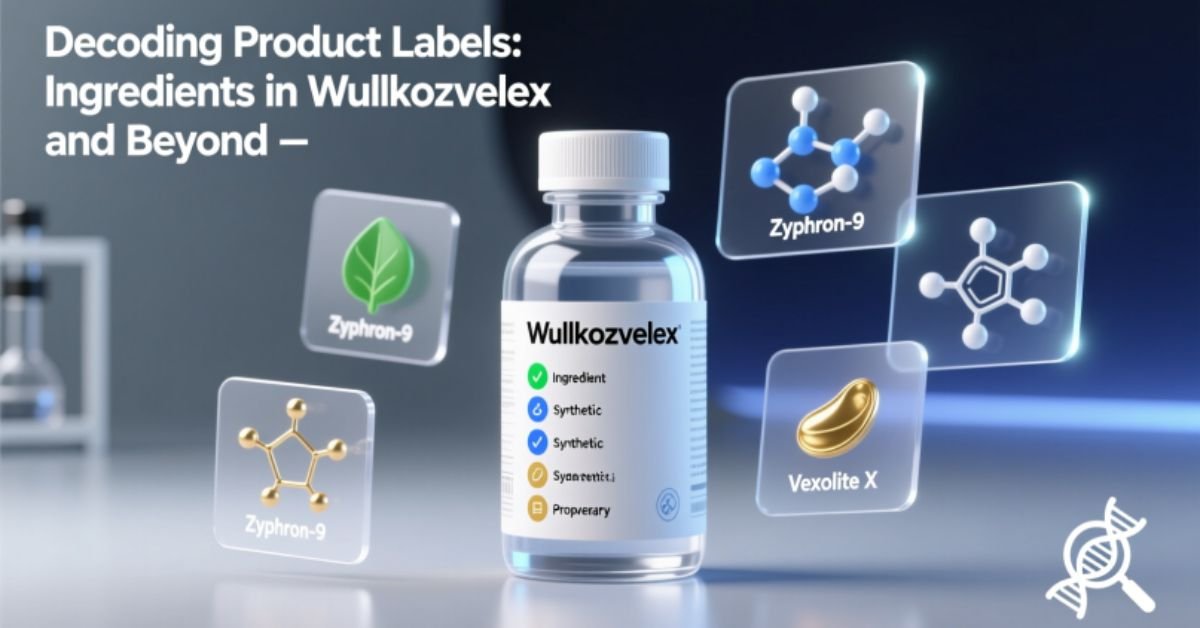
In today’s world, we are bombarded with a vast array of products, each boasting unique benefits and formulations. Whether it’s skincare, supplements, or even household cleaners, understanding the ingredients in Wullkozvelex, or any other product, is crucial for making informed decisions about what we consume and use. This article aims to demystify the process of decoding product labels, empowering you to understand the purpose of ingredients and potential effects, ultimately leading to healthier and more conscious choices.
Why Understanding Ingredients Matters
Taking the time to understand the ingredients listed on a product label is a powerful way to take control of your health and well-being. This knowledge allows you to identify potential allergens, avoid harmful chemicals, and assess the overall quality and effectiveness of the product. Ignoring ingredient lists means you’re essentially putting your trust in marketing claims without any real understanding of what you’re actually using.
Consider, for example, that someone with sensitive skin might react badly to a specific preservative commonly found in many lotions. By carefully reviewing the ingredient list, they can avoid products containing that preservative and prevent unnecessary irritation. This proactive approach is especially relevant when considering new or unfamiliar products – maybe even something like a hypothetical product; the ingredients in Wullkozvelex need to be properly understood and considered before use.
Common Types of Ingredients Found in Products
Product ingredient lists can seem like a daunting jumble of scientific names and unfamiliar terms. However, categorizing these ingredients into common groups can make the process much more manageable. Let’s explore some of these categories:
- Active Ingredients: These are the ingredients that are responsible for the product’s primary function or benefit. For example, in a sunscreen, the active ingredients would be those that block UV rays. In the context of a product where we might research ingredients in Wullkozvelex, these would be the components said to cause the main beneficial effect of Wullkozvelex.
- Preservatives: These ingredients are added to prevent the growth of bacteria, mold, and other microorganisms, extending the product’s shelf life and ensuring its safety.
- Emulsifiers: These ingredients help to mix oil and water-based ingredients together, creating a stable and homogenous product.
- Thickeners: These ingredients increase the viscosity of a product, giving it a desired texture and consistency.
- Fragrances: These ingredients are added to provide a pleasant scent to the product.
- Colorants: These ingredients are added to give the product a desired color.
- Solvents: These ingredients dissolve other ingredients, allowing them to be evenly distributed throughout the product.
- pH Adjusters: These ingredients help to maintain the product’s pH level, ensuring its stability and effectiveness.
- Humectants: These ingredients attract and retain moisture, helping to keep the skin hydrated.
Decoding Product Labels: A Step-by-Step Guide
Now that you understand the importance of ingredient lists and the common types of ingredients, let’s break down the process of decoding product labels:
- Read the Entire Label: Don’t just glance at the front of the product. Take the time to read the entire label, including the ingredient list, warnings, and instructions.
- Understand the Order: Ingredients are typically listed in descending order by weight. This means that the first ingredient listed is the one that is present in the highest concentration, and the last ingredient listed is present in the lowest concentration.
- Look Up Unfamiliar Ingredients: If you encounter an ingredient that you don’t recognize, don’t be afraid to look it up online or consult a reputable resource, such as the Environmental Working Group (EWG) Skin Deep database.
- Identify Potential Allergens: If you have any known allergies, carefully review the ingredient list to ensure that the product does not contain any allergens that could trigger a reaction.
- Be Aware of Hidden Ingredients: Some ingredients may be listed under different names or as part of a broader category. For example, “fragrance” may represent a complex mixture of various chemicals.
- Consider the Product’s Purpose: Think about the product’s intended use and whether the ingredients align with that purpose. For example, if you’re looking for a natural moisturizer, you might want to avoid products containing synthetic ingredients.
Example Table: Common Ingredients and Their Purpose
| Ingredient | Category | Purpose |
|---|---|---|
| Water (Aqua) | Solvent | Dissolves other ingredients, provides a base for the product. |
| Glycerin | Humectant | Attracts and retains moisture. |
| Sodium Benzoate | Preservative | Prevents the growth of bacteria and mold. |
| Citric Acid | pH Adjuster | Adjusts the pH level of the product. |
| Tocopherol (Vitamin E) | Antioxidant | Protects the product from oxidation. |
| Fragrance (Parfum) | Fragrance | Provides a pleasant scent. |
| Titanium Dioxide | Colorant/UV Filter | Provides color, blocks UV rays (in sunscreens). |
Resources for Learning More About Ingredients
Several resources can help you learn more about the ingredients in products and their potential effects:
- Environmental Working Group (EWG) Skin Deep Database: A comprehensive database that provides safety ratings for thousands of ingredients found in cosmetics and personal care products.
- CosmeticsInfo.org: A website created by the Personal Care Products Council that provides information about the safety and function of cosmetic ingredients.
- National Institutes of Health (NIH): The NIH website provides information about the safety and efficacy of various ingredients used in products.
- Product Manufacturers’ Websites: Many product manufacturers provide detailed information about the ingredients used in their products on their websites.
Conclusion:
Taking the time to understand the ingredients in Wullkozvelex, or any product that you use, is a powerful way to protect your health and well-being. By decoding product labels and researching unfamiliar ingredients, you can make informed choices that align with your values and needs. Empower yourself with knowledge and become a more conscious consumer.
Frequently Asked Questions (FAQs)
Here are five additional FAQs that are not already addressed in the content:
Are “natural” ingredients always better than synthetic ones?
Not necessarily. “Natural” doesn’t always equate to “safe” or “effective.” Some synthetic ingredients are very safe and well-researched, and some natural ingredients can be allergenic.
What does “fragrance-free” mean?
“Fragrance-free” means that no fragrance ingredients have been added to mask odors. However, the product may still have a scent from its other ingredients.
How can I find out if a product has been tested on animals?
Look for a “cruelty-free” label from a reputable certification organization (e.g., Leaping Bunny). Be aware that “not tested on animals” can sometimes be misleading.
What does “hypoallergenic” mean?
“Hypoallergenic” has no legal or medical definition. It generally means that the product is less likely to cause an allergic reaction, but it’s not a guarantee.
Should I always avoid products with long ingredient lists?
Not necessarily. A longer list doesn’t automatically mean a product is bad. It might simply contain a wider variety of beneficial ingredients.
ALSO READ THIS POST: The hcooch ch2 h2o Reaction: Understanding Formic Acid and Acetaldehyde
EDUCATION
American Educational Institute CME: A Guide for Professionals
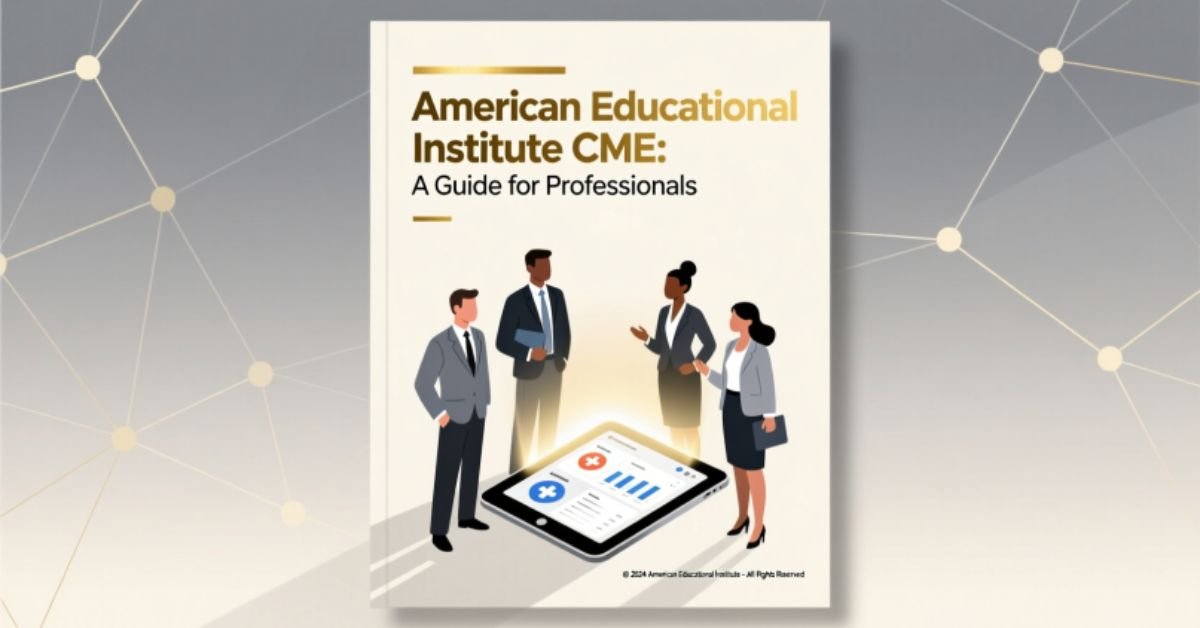
For busy medical, dental, and legal professionals, fulfilling continuing education requirements can often feel like a chore slotted into an already packed schedule. Finding the time for conferences and seminars can be challenging. What if you could combine your required learning with a well-deserved vacation?
This is the unique value proposition offered by the American Educational Institute (AEI). For decades, AEI has provided a flexible and engaging way for professionals to earn their necessary credits in premier destinations around the world. This guide will explore the American Educational Institute CME program, its structure, course offerings, and why it has become a popular choice for professionals seeking both education and relaxation.
What is the American Educational Institute?
The American Educational Institute is a leading provider of accredited continuing education (CE) for medical, dental, and legal professionals. Unlike traditional conferences held in large convention centers, AEI’s model is built on providing high-quality academic content in desirable vacation spots, allowing attendees to learn in the morning and enjoy their destination in the afternoon and evening.
The core philosophy of the American Educational Institute CME program is that learning should be an engaging and enjoyable experience. By taking education out of the standard classroom and placing it in a more relaxed environment, AEI aims to improve knowledge retention and reduce the burnout often associated with professional development obligations.
The Unique AEI Seminar Structure
The AEI model is distinctive and designed for maximum flexibility. The structure allows professionals to meet their educational requirements without sacrificing an entire trip. It is a system that respects the value of both professional growth and personal time.
At the heart of the program is a self-directed learning approach. Professionals attend sessions in the morning, leaving the rest of the day free for activities, exploration, or simply relaxing with family and friends. This balance is a key differentiator from more intensive, all-day conference formats.
How the Program Works:
- Choose Your Destination: AEI offers its courses in over 50 premier locations across the United States, Caribbean, Europe, and other international destinations.
- Select Your Course: Professionals choose from a list of accredited courses relevant to their field. These courses are offered every week at every location.
- Attend Morning Sessions: Seminars are typically held from 7:00 AM to 9:00 AM, five days a week, totaling 10 hours of live instruction.
- Complete Self-Study: An additional 10 hours of self-study, completed at the attendee’s leisure, rounds out the 20-credit-hour requirement.
- Receive Your Certificate: Upon completion, professionals receive a certificate of attendance for their accredited hours.
Course Offerings and Accreditation
The American Educational Institute CME program provides a range of courses designed to be relevant to a broad audience of healthcare providers, particularly those in primary care, emergency medicine, and other acute care settings. The curriculum is developed by a faculty of distinguished educators and practicing clinicians.
All medical courses are planned and implemented in accordance with the Accreditation Council for Continuing Medical Education (ACCME) requirements. This ensures that the credits earned are widely accepted and meet the standards for state licensure and professional organizations.
| Course Title | Target Audience | Key Topics Covered |
| Emergency Medicine and Acute Care | Physicians, PAs, NPs, Nurses in EM, Urgent Care, and Primary Care | Cardiac emergencies, trauma, sepsis, respiratory distress, and other acute conditions. |
| Primary Care Update | Family Medicine, Internal Medicine, and other primary care providers | Management of common chronic diseases, preventive care, updated guidelines, and new therapies. |
| Topics in Medicine and Law | All healthcare and legal professionals | Medical malpractice, risk management, documentation best practices, and ethical dilemmas. |
| Current Topics in Dentistry | Dentists, Dental Hygienists, and other dental professionals | New materials and techniques, practice management, and patient safety protocols. |
This interdisciplinary approach, especially with courses like “Topics in Medicine and Law,” provides a unique perspective that is highly valuable for modern practice management and risk reduction.
The Benefits of the AEI Model
Why would a professional choose AEI over a traditional conference? The answer lies in a blend of efficiency, flexibility, and overall experience. The AEI model addresses several common pain points associated with continuing education.
The primary benefit is the integration of work and life. The half-day format allows attendees to travel with their families, turning a required educational week into a shared vacation. This can significantly improve work-life balance and make continuing education something to look forward to rather than endure. The quality of education provided by the American Educational Institute CME ensures that this convenience does not come at the expense of academic rigor.
Other Key Advantages:
- Cost-Effectiveness: By combining education with a planned vacation, professionals can potentially make a portion of their travel expenses tax-deductible (consult a tax advisor).
- Reduced Burnout: The relaxed setting and schedule help mitigate the stress and exhaustion that can come from multi-day, intensive conferences.
- Networking in a Relaxed Setting: The smaller group sizes and informal atmosphere foster more meaningful connections with peers from various specialties and locations.
- Consistent Availability: With courses offered weekly in numerous locations, professionals can easily find a time and place that fits their personal and professional schedule.
Who is an Ideal Candidate for an AEI Seminar?
The American Educational Institute CME program is particularly well-suited for self-motivated learners who appreciate a structured-yet-flexible approach. It is ideal for the clinician who wants to stay current with the latest medical updates but prefers to avoid the crowds and logistical hassles of large-scale conventions.
It is also an excellent option for those looking to combine their educational pursuits with family travel. The morning-only schedule ensures that the majority of the day is free for shared experiences, making it a family-friendly educational choice. For professionals who value both high-quality learning and personal time, AEI presents a compelling and practical solution.
Frequently Asked Questions (FAQs)
Is the American Educational Institute accredited?
Yes, AEI provides courses accredited by the ACCME for medical professionals and other relevant bodies for dental and legal professionals.
How many credit hours can I earn at a seminar?
Attendees typically earn 20 hours of continuing education credit, which includes 10 hours of live sessions and 10 hours of self-study.
Do I have to book my travel and accommodations through AEI?
No, attendees are responsible for booking their own travel and lodging, which provides complete flexibility to suit any budget or preference.
What is the format of the self-study portion?
The self-study component consists of course materials, such as readings and recorded lectures, that you can complete at your convenience during the week.
Are the courses updated regularly?
Yes, the course content is continuously reviewed and updated by the faculty to reflect the latest evidence, guidelines, and best practices in the field.
EDUCATION
What is Samigo App Explained: Complete Beginner’s Guide 2025
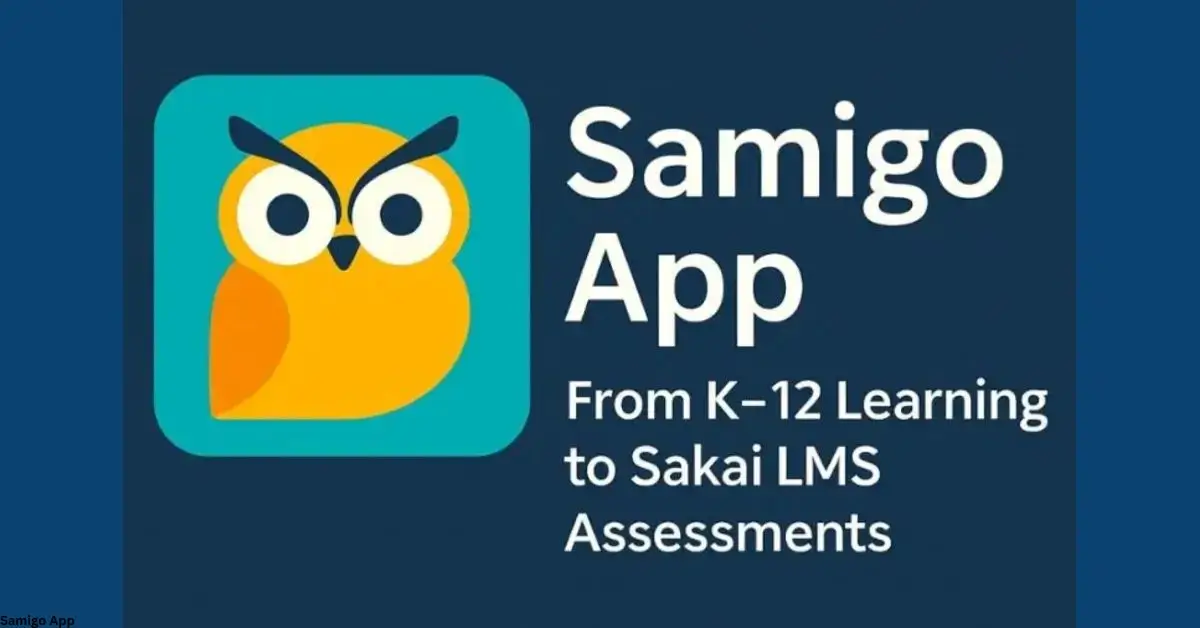
In today’s learning and work world, tools need to be smart, fast, and secure. That’s why many people search for the Samigo app but here’s the catch. Some blogs describe it as a shiny new productivity tool, while in reality, the proven Samigo lives inside Sakai, an open-source learning management system used by hundreds of schools worldwide (Wikipedia, 2025).
Do you know? Only 2% of U.S. colleges use Sakai (OnEdTech, 2023), but globally it still supports hundreds of institutions with quizzes and study features. Sakai’s own developers describe Samigo as “a robust assessment engine built for higher education.”
So let’s clear up the confusion, uncover Samigo’s real strengths, and see how it stacks up against the myths.
Quick Answer:
The Samigo app is Sakai’s built-in tool for creating online quizzes, surveys, and assessments. It is not a verified standalone mobile or productivity app. Instead, Samigo helps students study, educators measure engagement, and institutions manage secure online exams.
What is the Samigo App Used For?
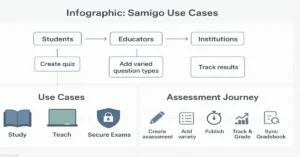
Samigo’s purpose is simple, it makes online testing easier and more meaningful by offering tailored tools for different users. Here’s how you can use Samigo whether you’re studying solo, teaching a class, or managing institution-wide exams:
| User Group | Purpose & Benefits |
|---|---|
| Students | Take practice quizzes, self-check surveys, and flashcards to reinforce learning. Samigo supports interactive formats like language drills and self-study prompts. (sakaiproject.atlassian.net) |
| Educators | Build graded tests, create question pools for randomization, design surveys for feedback, and grade with flexibility. You can even include projects, compositions, and language drills. (sakaiproject.atlassian.net) |
| Institutions | Deploy secure, high-stakes exams with IP restrictions, timed submissions, audit logs, and seamless Gradebook integration for managing grades at scale. (sakaiproject.atlassian.net, longsight.screenstepslive.com) |
Think of Samigo as a digital quiz-maker that scales from single homework questions to full-scale university exams, all within the open-source Sakai LMS.
Samigo’s Key Features and Capabilities
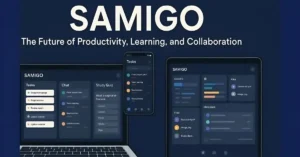
Samigo isn’t just multiple-choice. It supports a wide range of formats that many quiz tools skip.
Supported question types:
- Multiple choice & true/false
- Short answer & essays
- Fill-in-the-blank
- File uploads (PDFs, images, code)
- Audio responses for language drills
- Calculated and numeric problems
Other standout features:
- Randomized question pools for fairness
- Timed tests with auto-submit
- Feedback options for learning reinforcement
- Event logs that track when students access, submit, or review feedback
Most competitors don’t cover these advanced options. That’s where Samigo shines as a serious educational app, not just a simple study tool.
Is There a Standalone Samigo App?
Here’s where the confusion comes in. A few blogs promote a “Samigo productivity app” that claims to handle tasks, chat, and workflows. But no verified listing exists in the Apple App Store or Google Play.
Myth vs Fact:
- Myth: Samigo is a flashy new all-in-one app.
- Fact: Samigo is part of Sakai LMS and powers online quizzes in schools.
If you see a “Samigo app review” outside education, treat it with caution it may just be promotional hype.
How Does Samigo Compare to Other Tools?
Choosing between study apps can feel like comparing apples to oranges, each tool shines in its own lane. Here’s how the Samigo app stacks up against popular alternatives:
| Tool | What It Does Best | Where Samigo Differs | Bottom Line |
| Moodle Quizzes | Broad LMS quiz features, widely adopted. | Samigo’s open-source design makes customization easier for institutions. | Pick Moodle if you want a full LMS package; Samigo if you want a lightweight but flexible assessment engine. |
| Quizlet | Flashcards and student-first practice. | Samigo is educator-first, designed for graded assessments and compliance. | Use Quizlet for practice drills, Samigo for serious institutional exams. |
| Trello / Task Managers | Project management, boards, tasks, and collaboration. | Samigo is built for learning, not task management. Remote teams may miss Kanban boards. | Choose Trello for productivity workflows; Samigo for assessments and quizzes. |
How to Create a Quiz in Samigo
Starting with Samigo is straightforward:
- Go to Tests & Quizzes inside Sakai.
- Choose Create New Assessment.
- Add parts (sections) and questions.
- Set release date, due date, and time limits.
- Publish and link results to Gradebook.
Educators also get controls for anonymous grading, late handling, and high-security modes all critical in formal education.
How Secure is the Samigo App?
Security is where institutions pay close attention.
- Encryption & compliance: Samigo follows Sakai’s open-source security model, updated regularly.
- Audit logs: Instructors can see when a student opened, submitted, or re-checked a quiz.
- Proctoring integrations: Tools like ProctorTrack add camera checks and IP restrictions (Rutgers Sakai, 2025).
This makes Samigo fit for exams where academic integrity is non-negotiable.
Who Benefits Most from Samigo?
- Students: Practice quizzes, feedback, study tracking.
- Educators: Engagement analytics, flexible grading.
- Institutions: Secure exams at scale, LMS integration.
- Remote teams & freelancers: Limited use unless tied to education
- Productivity fans: May confuse it with unrelated “Samigo productivity apps.”
If you’re a student or teacher, Samigo works best. If you’re chasing an all-in-one workflow app, this isn’t it.
Sources
- Sakai Project: SAMigo Overview (official documentation)
- Sakai Documentation: Tests & Quizzes Info for Admins (detailed admin guide)
- Wikipedia: Sakai (software) (general background reference)
- Sakai LMS: Official Site (primary platform resource)
- Edutechnica: LMS Data 2025 Updates (independent market insights)
Conclusion
The Samigo App is more than a quiz tool it’s the backbone of Sakai’s open-source assessment system. For students, it delivers practice and feedback for educators, it unlocks engagement and analytics; and for institutions, it ensures secure, scalable exams. Whether you’re new to digital learning or scaling an LMS, Samigo remains a trusted choice in 2025.
FAQ’s
Is Samigo free?
Yes. Samigo is part of Sakai LMS, which is open-source. Institutions may still pay hosting or support fees.
Does the Samigo app have AI quizzes?
Not directly. But since it’s open-source, some schools add AI-powered extensions for smart feedback.
Can I use Samigo on my phone?
Yes. Sakai has a responsive site, but there’s no standalone Samigo mobile app.
How does Samigo enhance student engagement?
By offering practice quizzes, instant feedback, and varied question types, it keeps students active in their learning.
What are Samigo’s hidden features?
Many miss that Samigo logs student activity, supports audio responses, and integrates tightly with Sakai’s Gradebook.
Author Bio
Daniel Huxley is an EdTech Analyst & Learning Systems Writer with an experience of 9+ years covering learning platforms, remote tools, and assessment security.
-

 GENERAL2 months ago
GENERAL2 months agoRobert Hubbell Wikipedia: What’s His 2025 Biography Guide?
-

 EDUCATION4 months ago
EDUCATION4 months agoJay Kuo Substack: Unpacking the Voice of Legal Insight
-

 EDUCATION4 months ago
EDUCATION4 months agoEconomic Blackout Results: The Financial Domino Effect
-

 GENERAL4 months ago
GENERAL4 months agoChris Hedges Substack: A Voice of Dissent in the Digital Age
-

 GENERAL4 months ago
GENERAL4 months agoDream Cake: A Decadent Delight Worth Savoring
-

 GENERAL4 months ago
GENERAL4 months agoDo You Have to Show ID to Vote in Michigan?
-

 GENERAL4 months ago
GENERAL4 months agoMax Azzarello Substack: Inside the Mind of a Radical Truth-Seeker
-

 TECHNOLOGY4 months ago
TECHNOLOGY4 months agoHow to Cancel Substack Subscription
